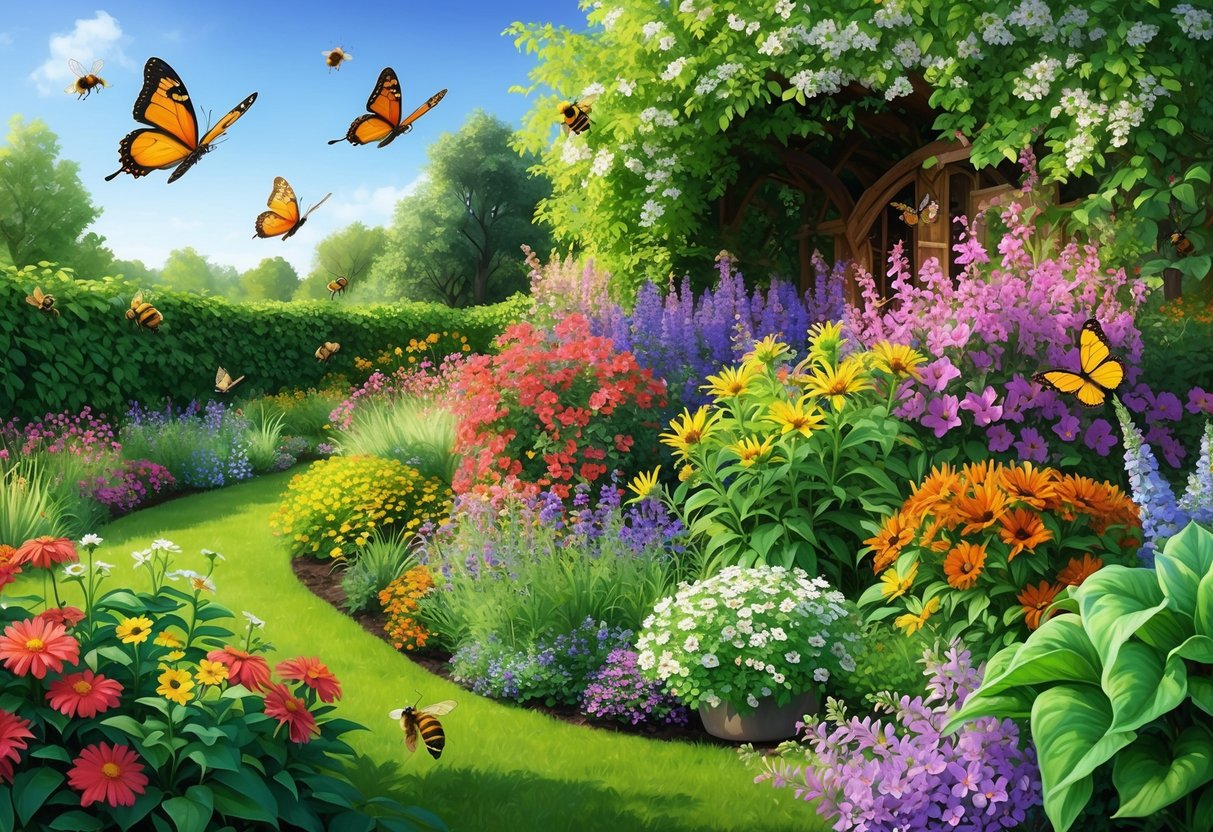
The 15 Stunning Flowering Plants That Attract Pollinators
Choosing the right flowering plants can transform any outdoor space into a pollinator paradise while also supporting a healthy and productive garden. Specific plants are particularly effective at attracting bees, butterflies, and other beneficial insects, making them essential additions to any pollinator-friendly landscape.
Lavender
Lavender (Lavandula spp.) is a staple in pollinator gardens due to its rich fragrance and long blooming period. Its purple flower spikes are highly attractive to bees, butterflies, and even some species of moths.
The plant not only provides reliable nectar but also thrives in full sun and well-drained soil, making maintenance simple for most gardeners. Gardeners appreciate lavender for its dual-purpose: supporting pollinators and offering aromatic foliage for use in culinary dishes or crafts.
Its drought tolerance helps it thrive in various climates, making it a resilient choice for a bee-friendly plant. Planted in rows or clusters, lavender creates both a visual and ecological highlight in any wildflower garden.
Discover more pollinator favorites at this guide to top pollinator plants.
Bee Balm
Bee balm (Monarda spp.) is known for its vibrant, shaggy blooms and strong minty scent. It attracts a range of pollinators, especially bumblebees, butterflies, and hummingbirds.
Its tubular flowers provide easy access to nectar, encouraging repeated visits from pollinators throughout the summer. Bee balm thrives in evenly moist, fertile soils and benefits from partial to full sunlight.
Its resistance to deer and general ease of care increase its appeal for gardeners looking to cultivate a diverse pollinator garden. The bright reds, pinks, and purples of bee balm create a striking focal point, making it a true magnet in any pollinator-friendly landscape.
Coneflower
The coneflower (Echinacea purpurea) stands out for its tough nature and high value to pollinators. Large, daisy-like blooms with raised centers provide nectar to bees, butterflies, and even helpful wasps.
Coneflowers are widely known as wildflowers that tolerate drought and poor soil conditions, making them ideal for low-maintenance gardens. Planting coneflower in large drifts or mixed beds ensures continuous attraction of pollinators from early summer into fall.
Flower heads remain appealing well after blooming, providing seeds for birds in winter. Many gardeners consider coneflower an anchor of any genuine pollinator paradise thanks to its lasting performance and adaptability.
Additional details on its pollinator benefits can be found in this comprehensive list of pollinator plants.
Zinnia
Zinnias (Zinnia elegans) are annuals famous for their bold, colorful blooms and extended flowering season. These flowers attract a variety of pollinators, especially butterflies and native bees.
Zinnias are easy to grow from seed and thrive in warm, sunny spots with well-drained soil. Due to their rapid growth and continuous blooming, zinnias fill gaps in the garden, offering consistent nectar sources when other flowers might pause.
Gardeners opt for zinnias not only for their pollinator benefits but also for their low maintenance and ability to withstand humid, hot summers. To find more top choices for creating a productive pollinator-friendly garden, check out this expert list of pollinator magnets.
More Must-Have Plants for a Healthy Pollinator Garden
Many pollinator-friendly plants not only draw bees, butterflies, and beneficial insects but also add color and texture to the landscape. Choosing a diverse mix of flowering species supports healthy ecosystem dynamics and continuous blooms.
Sunflower
Sunflowers are icons of summer gardens, producing large, nectar-filled blooms that stand tall and bright. Their height and vivid yellow petals attract bees, butterflies, and even hummingbirds from a distance.
Sunflowers offer abundant pollen that supports honeybees and native bees, making them critical for late-season foraging when other food sources dwindle. Grow sunflowers in full sun with well-draining soil, spacing seeds or starts at least one foot apart to allow room for their large leaves.
They thrive with moderate moisture and appreciate a sheltered spot if strong winds are common. As sunflowers mature, their central discs fill with nutritious seeds consumed by birds, so they support wildlife beyond pollinators.
Some gardeners plant sunflowers alongside vegetables to boost crop yield by increasing pollination activity.
Borage
Borage, an annual herb, produces clusters of star-shaped, blue flowers that are favorites for bees and other pollinators. Each flower provides easily accessible nectar and blooms prolifically from early summer through fall.
Borage is known for its ability to self-seed, returning year after year if left undisturbed. The plant grows best in full sun to partial shade with well-drained soil.
Borage is also valued for its edible leaves and flowers, which have a mild cucumber flavor. It acts as a companion plant in vegetable gardens, discouraging pests and improving pollination in nearby crops.
Borage’s versatility and attractiveness to pollinators make it a reliable choice for any garden aiming for biodiversity. Bees are especially drawn to its continuous blooming habit.